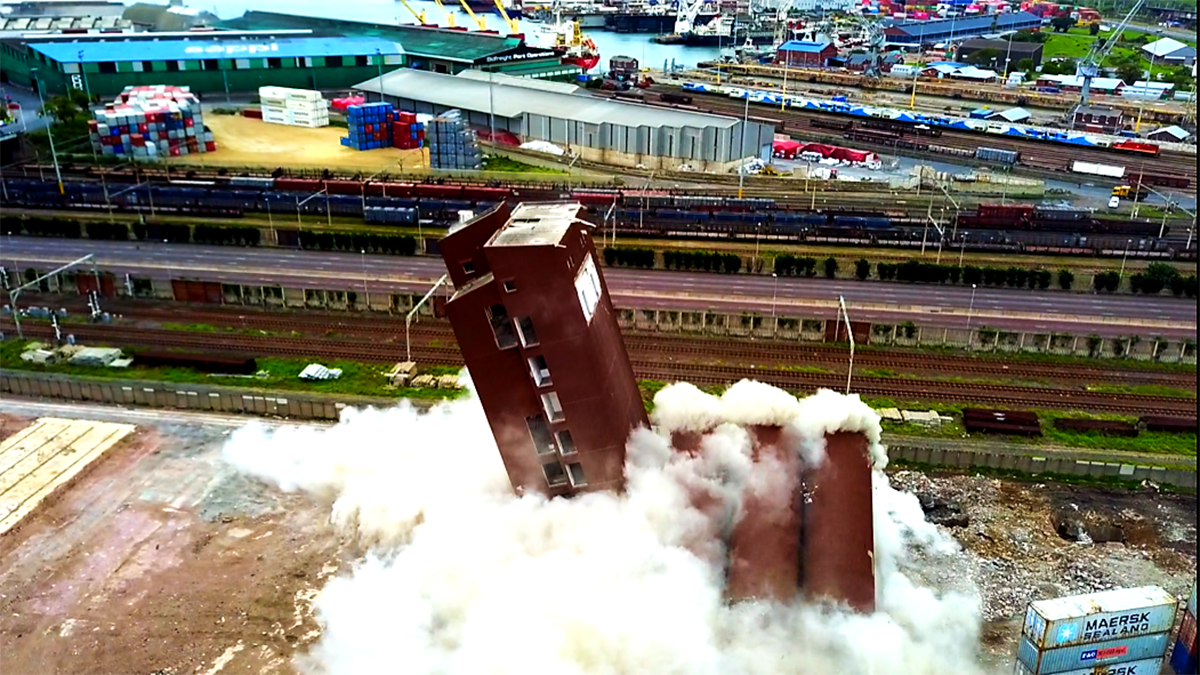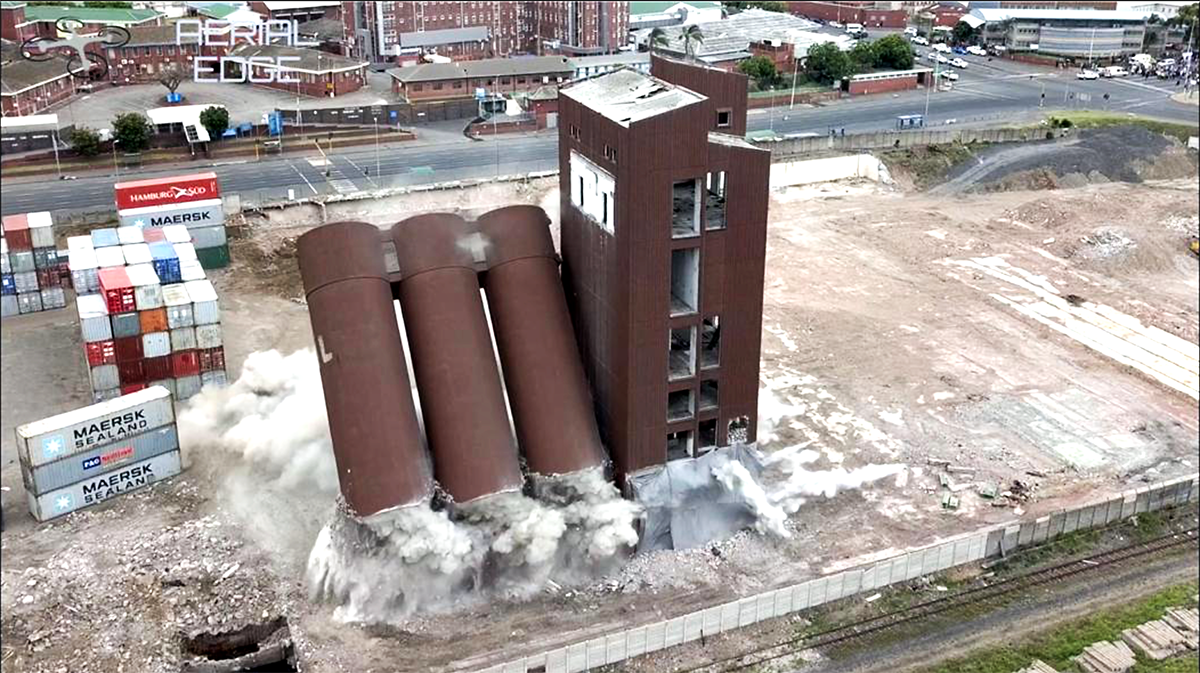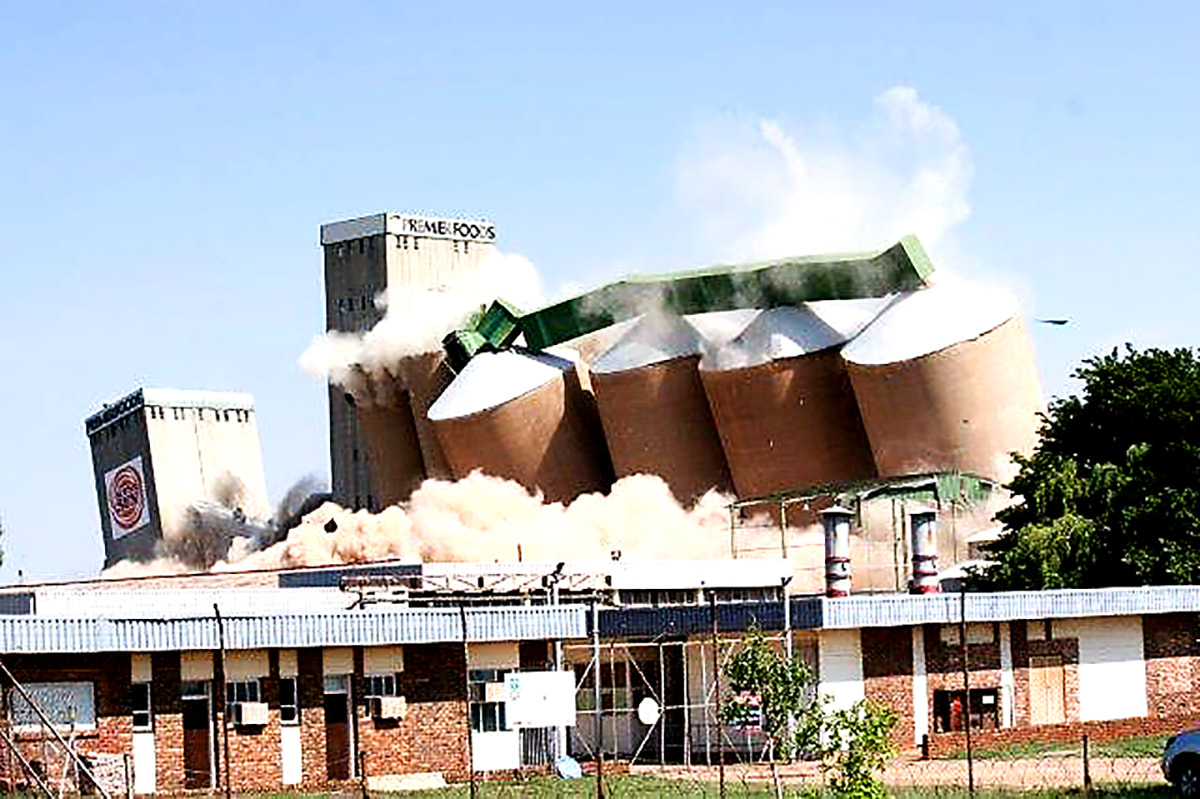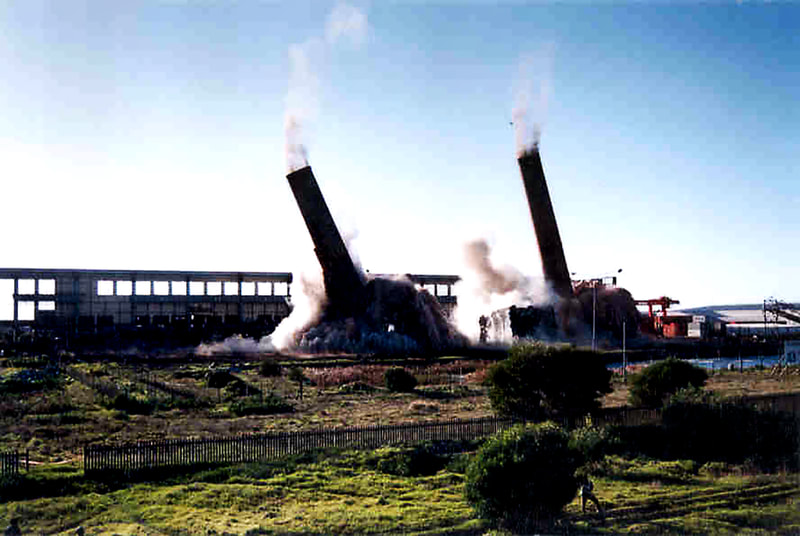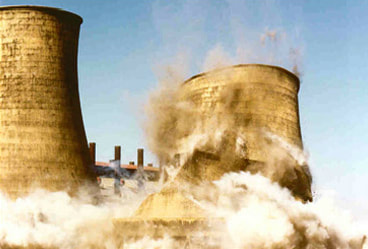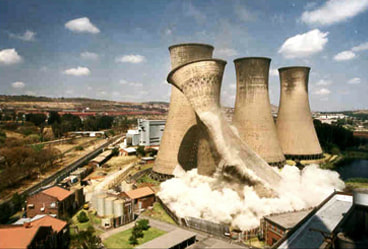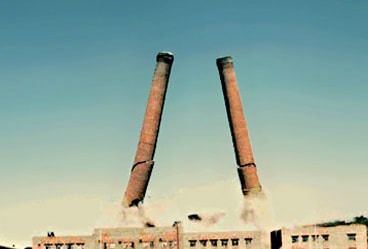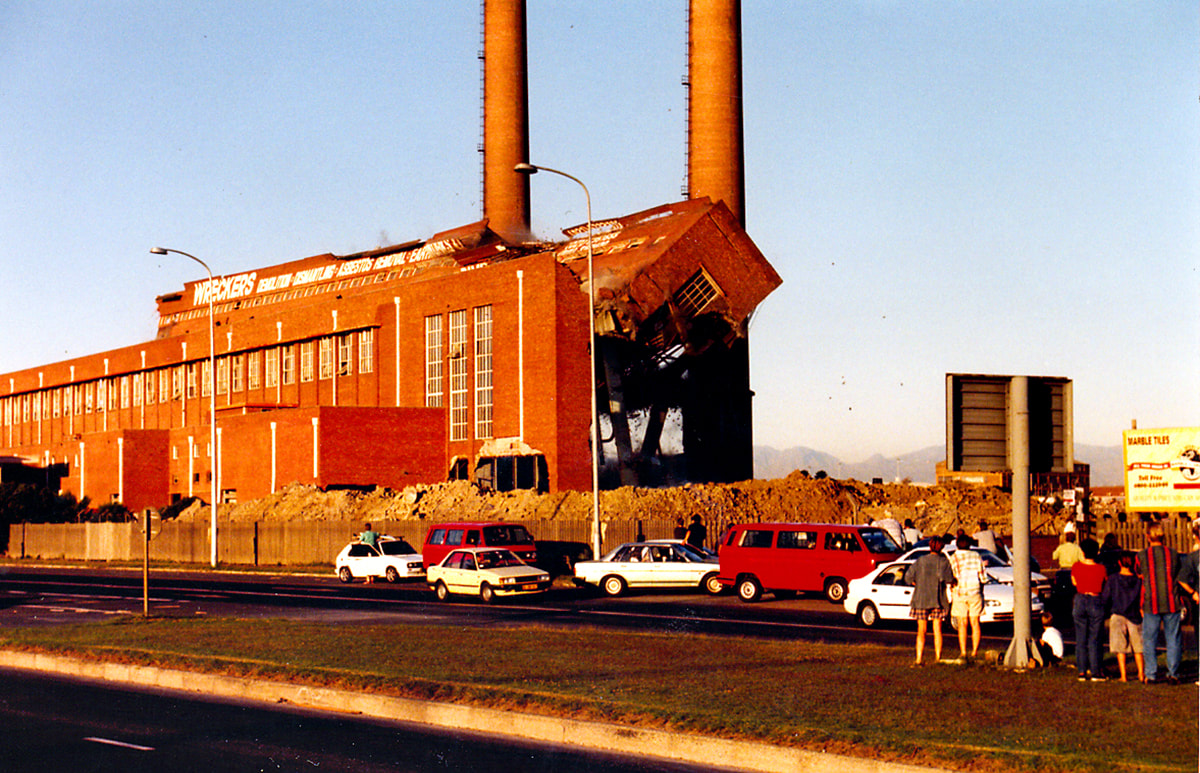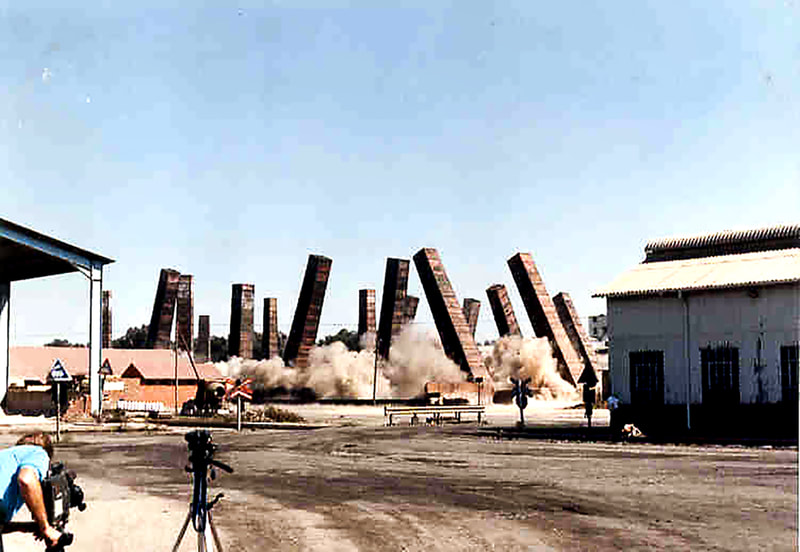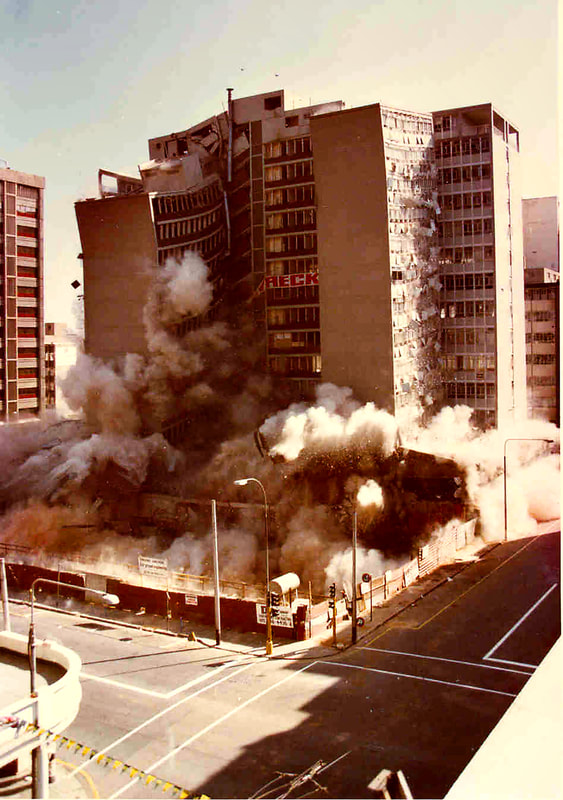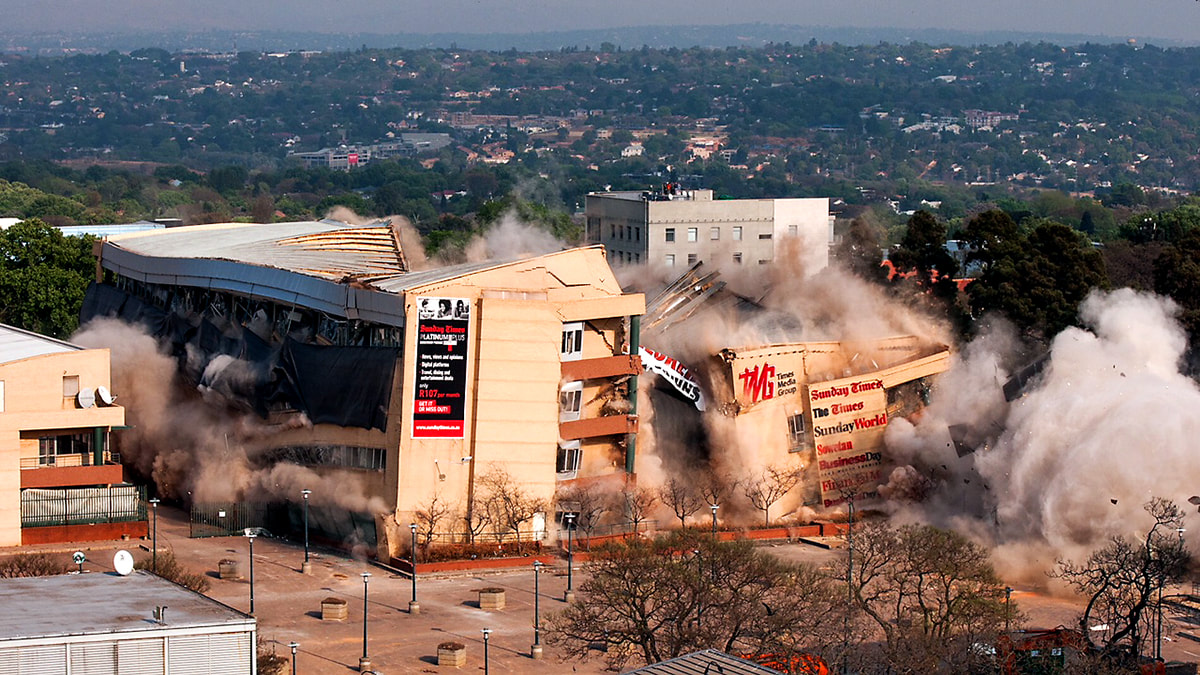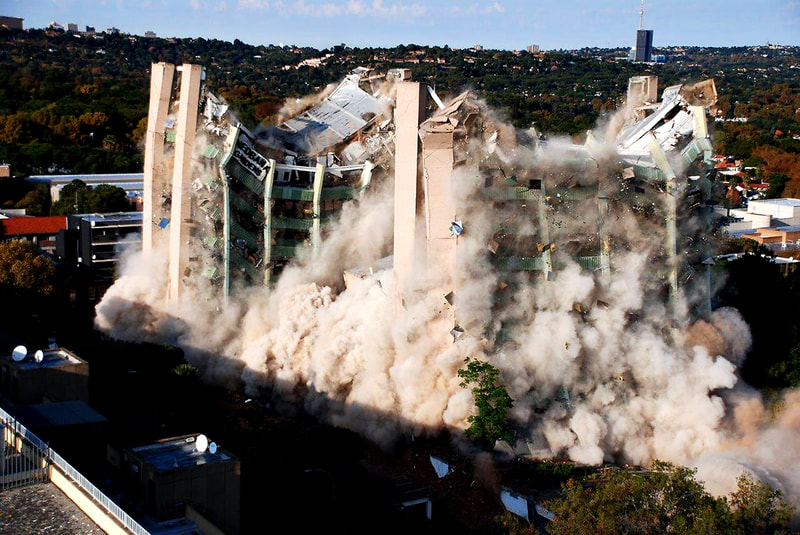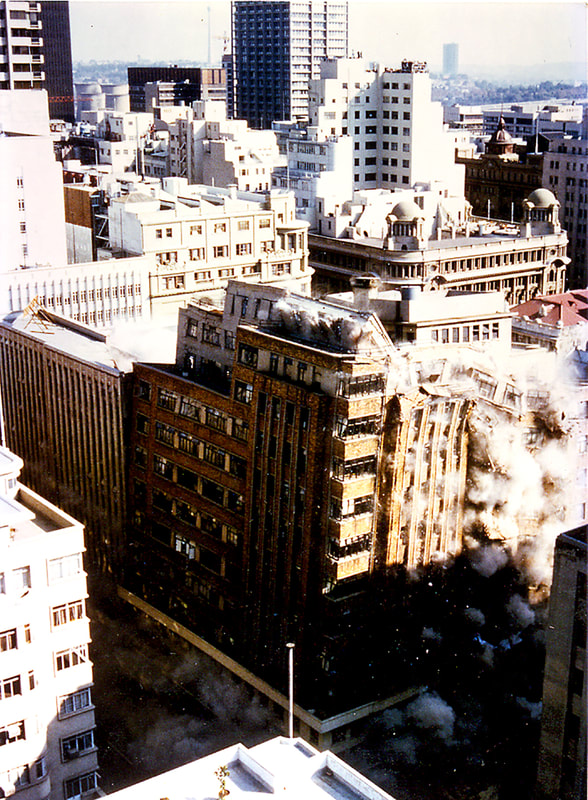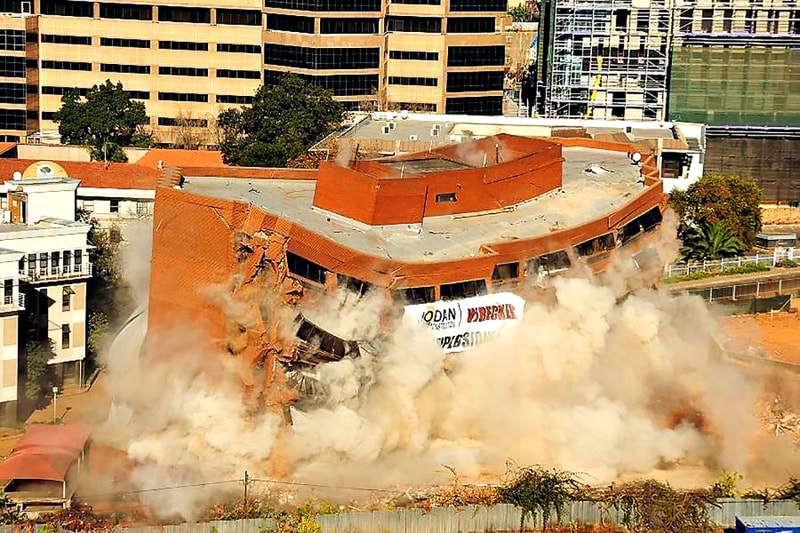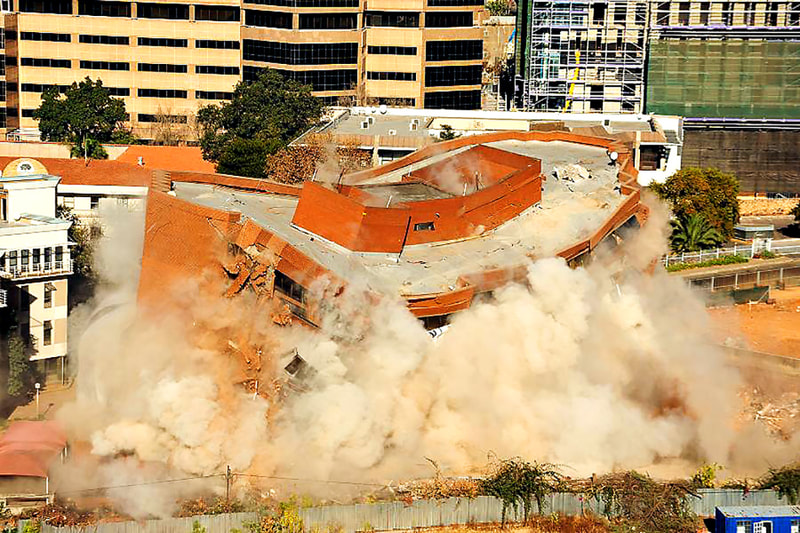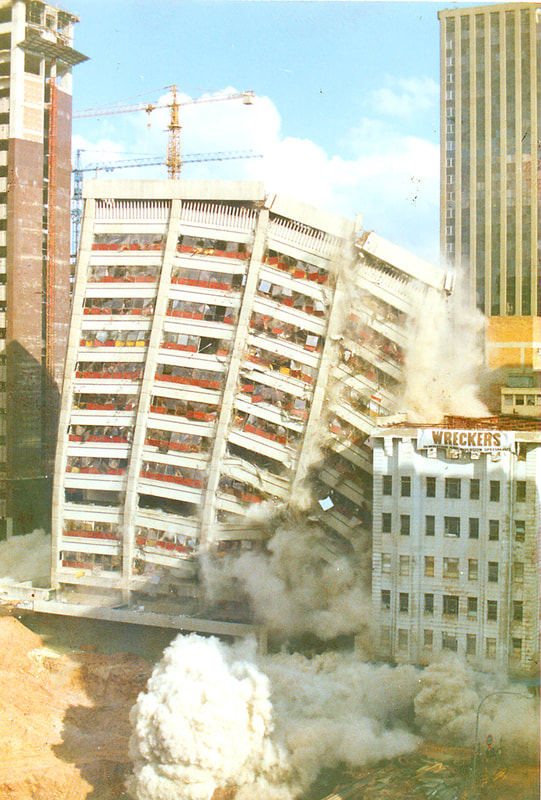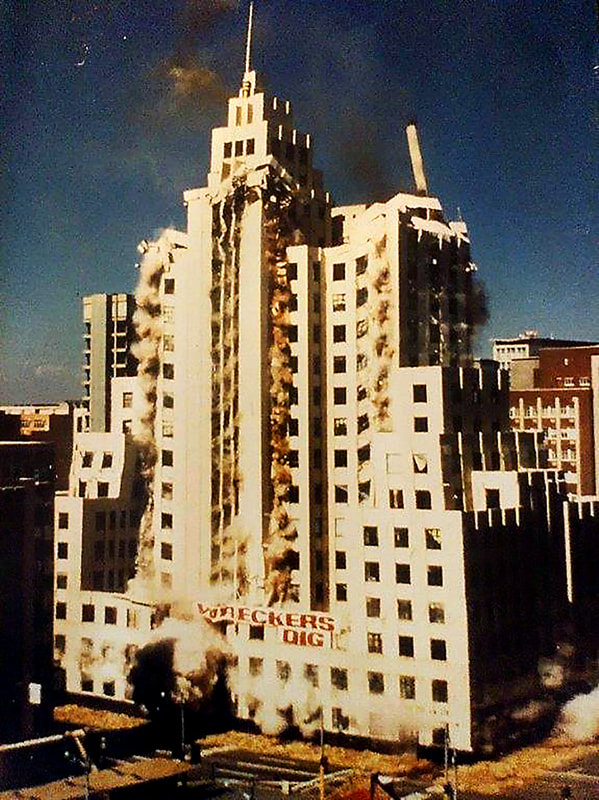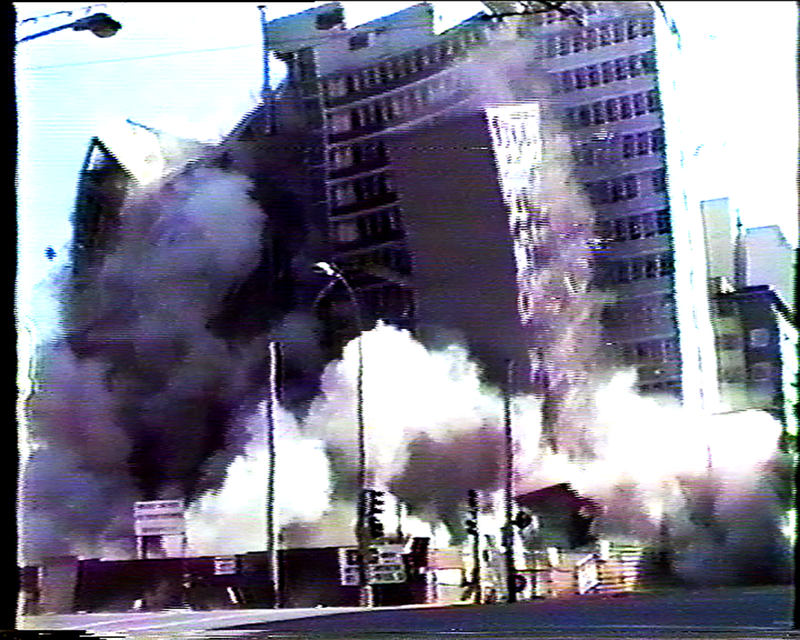General Explosives Key BenefitsAdvantages: Reduction of handwork.
Equipment: Specialised explosives. Cost Saving: Short programmes, minimal disruption. Safety: Word conducted on intact structures In the eyes of the public “explosives” conjures up images generated by the special effects on T.V. This is not our aim, we use explosives as a tool. |
There are four basic applications of explosives in demolition. They can be used for cracking and shattering, for removal of structural members, as propellant charges and as cutting charges. With the cracking and shattering this is usually to “loosen up” large pieces of concrete so that they can be dealt with later by machinery. Removal of structural members is generally employed to take out columns, so that a previously prepared building can be collapsed or toppled.
It can then be further reduced by machinery working at ground level. Propellant charges are generally employed on steel structures, where a previously prepared framework has selected pre-cut legs driven out to bring about collapse. Cutting charges, also known as shaped charges, are used as the name implies to cut through steelwork. While some preparation may be done by removing redundant parts, the structure is completely intact until detonation. It then collapses to ground level for further processing |
Implosions Key BenefitsAdvantages: Suited too fast track contracts.
Equipment: Specialised explosives and ease of clearance. Cost Saving: Good. Safety: Reduced risk to public and workforce. While “implosion” is commonly applied to all multi-storey demolition by explosives, there are several techniques. Implosion is where the demolition is centrally motivated to cause a building to collapse in on itself. Other techniques are progressive collapse, sequential collapse and toppling. |
All the above are largely achieved by doing considerable internal preparation by removing walls, stairs and redundant elements. This converts the structure to a beam and column layout. The various columns are removed by explosives, causing the building to collapse. The type of collapse is controlled by the sequence and timing (both horizontal and vertical) of the detonations.
This allows certain parts to act as driving weights while others remain as hinges. The direction and pattern is mainly designed to reduce any untoward effects on surrounding services and buildings. Environmental effects such as noise, vibration and dust are also mitigated by the pattern. Since we have an excellent track record. We are able to offer our own insurance cover on an international basis. |
Premier Foods – Waltloo |
122 Pybus Road Sandton |
|
IMPLOSIONS |
Lagos Nigeria Bank of Industries
|
|
|


